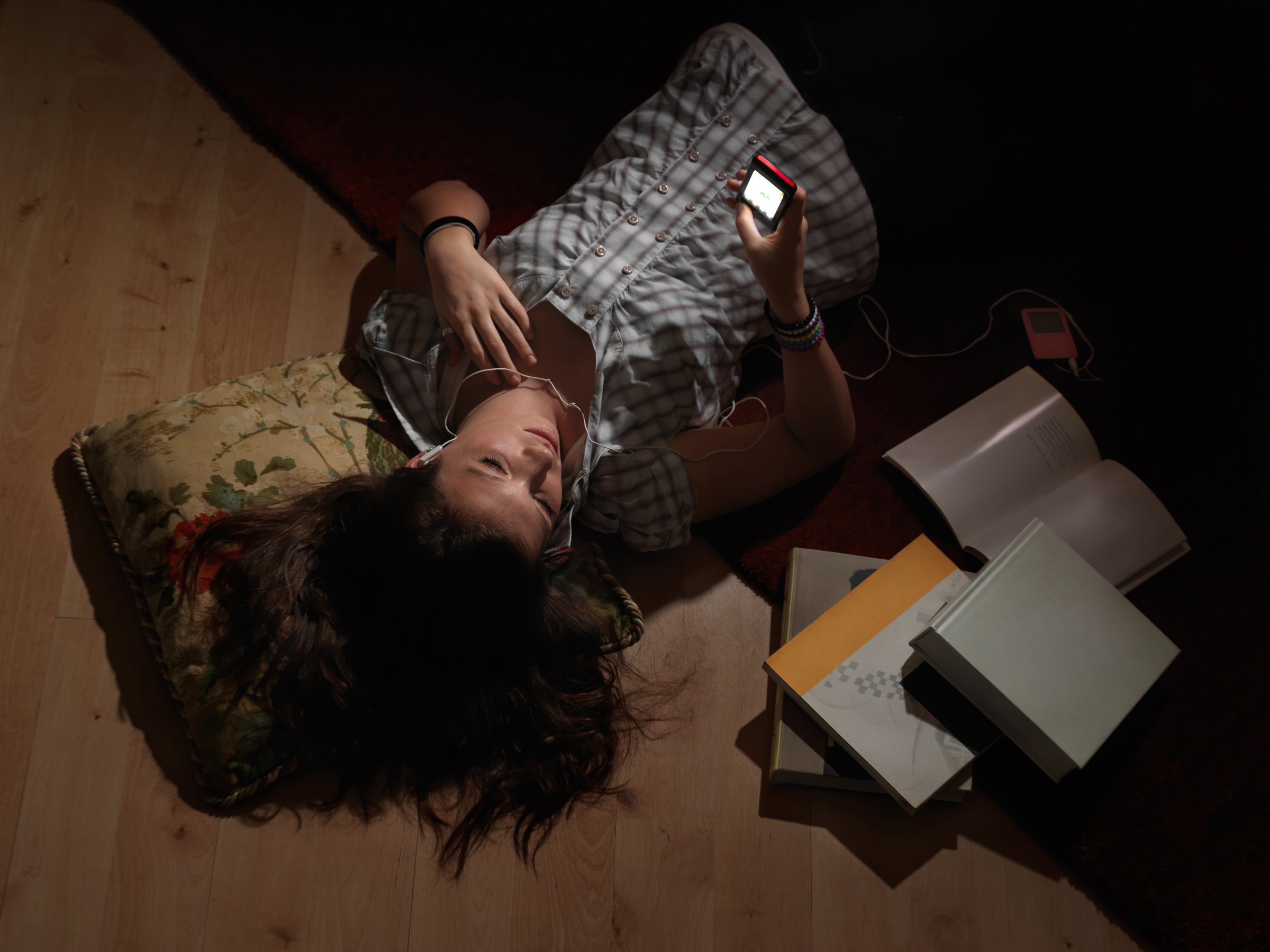
Teenagers at risk of depression, anxiety and suicide often wear their troubles like a neon sign. Their risky behaviors—drinking too much alcohol, using illegal drugs, smoking cigarettes and skipping school—can alert parents and teachers that serious problems are afoot.
But a new study, published this month in the journal World Psychiatry, finds that there’s another group of adolescents who are in nearly as much danger of experiencing the same psychiatric symptoms as their high-risk peers: teens who use tons of media, don’t get enough sleep and have a sedentary lifestyle.
Of course, that may sound like a description of every teenager on the planet.
I myself seem to have two mantras these days with my 16-year-old: “Get off your phone” and “It’s really late. Go to sleep.” But the study warns that it is teenagers who engage in all three of these practices in the extreme who are truly in jeopardy.
Because their behaviors are not usually seen as a red flag, these young people have been dubbed the “invisible risk” group by the study’s authors.
“In some ways they are at greater risk of falling through the cracks,” says Vladimir Carli, a researcher at the National Centre for Suicide Research and Prevention of Mental Ill-Health at the Karolinska Institute in Sweden. “While most parents, teachers and clinicians would react to an adolescent using drugs or getting drunk, they may easily overlook teenagers who are engaging in unobtrusive behaviors such as watching too much TV, not playing sports or sleeping too little.”
The study’s authors surveyed 12,395 students between the ages of 14 and 16 from 11 European countries and analyzed nine risk behaviors: excessive alcohol use, illegal drug use, heavy smoking, reduced sleep, being overweight, being underweight, having a sedentary routine, high media use and truancy. Their aim was to determine the relationship between these risk behaviors and mental health issues in adolescent boys and girls.
About 58% of the students demonstrated none or very few of the risk behaviors. Some 13% scored high on all nine of the risk behaviors. And 29%, the so-called “invisible risk” group, scored high on three in particular: They spent five hours a day or more watching TV, playing video games or surfing the Internet (unrelated to school or work). They slept six hours a night or less. And they neglected “other healthy activities, such as sports.”
The group that scored high on all nine of the risk behaviors was most likely to show symptoms of depression; in all, nearly 15% of this cohort reported being depressed, compared with just 4% of the low-risk group. But the invisible group wasn’t far behind the high-risk set, with more than 13% of them exhibiting depression.
The same pattern held true for anxiety, with 9% of the high-risk kids showing symptoms, compared with 2.5% of the low-risk group and 8% of the invisible group.
Meanwhile, 10% of the high-risk group reported that they’d attempted suicide, compared with less than 2% of the low-risk group. The invisible group came in at 6%—three times the rate of the low-risk kids.
The findings caught Carli and his colleagues off guard. “We were very surprised,” he says. “The high-risk group and low-risk group are obvious. But this third group was not only unexpected, it was so distinct and so large—nearly one third of our sample—that it became a key finding of the study.”
Carli and his team aren’t the only ones to raise concerns about the confluence of too little sleep, too much media use and too little exercise. In a piece published last month on the New York Times Motherlode blog, writer and educator Jessica Lahey made the case that teens need at least nine hours of sleep a night, but often get only about seven.
To turn that around, she suggested, parents can take a number of steps, including making sure that their kids keep electronics out of the bedroom. “Laptops, smartphones and tablets emit approximately 30 to 50 lux, about half the illumination of a room light, more than enough light to affect circadian rhythms and delay the production and release of melatonin,” she noted. Lahey also encouraged exercise, explaining that people who work out for three or four 30-minute sessions a week sleep 45 minutes to an hour longer on most nights.
Carli, whose work is part of the larger Saving and Empowering Young Lives in Europe research project, says that one of the most significant things about his study is that it provides new early-warning signs for parents, teachers and mental health-care providers. And early identification, support and treatment for mental health issues, he says, are the best ways to keep them from turning into full-blown disorders.
“It is likely that adults won’t see these behaviors as risky or as reason for alarm,” he says. “But the truth is, they are. It doesn’t mean that every teenager who doesn’t get enough sleep or plays too many video games is at risk. But it is something we need to pay close attention to.”
More Must-Reads from TIME
- Donald Trump Is TIME's 2024 Person of the Year
- Why We Chose Trump as Person of the Year
- Is Intermittent Fasting Good or Bad for You?
- The 100 Must-Read Books of 2024
- The 20 Best Christmas TV Episodes
- Column: If Optimism Feels Ridiculous Now, Try Hope
- The Future of Climate Action Is Trade Policy
- Merle Bombardieri Is Helping People Make the Baby Decision
Contact us at letters@time.com